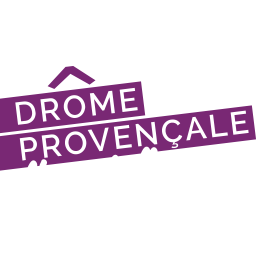Discover Grignan
Grignan is a typical Provencal village, rich in places to discover during your stay.
The origins of Grignan
There’s no real certainty about Grignan’s origins. While Roman presence has been proven (tombs, coins and a granite “milestone” have been found), no one knows whether Grignan existed before their arrival. It has been established that the Moors created the first castle and ramparts during the 9th century.
But the first written record of Grignan to reach us dates back only to the 12th century (in Latin charters, in its so-called vulgar form: “Graignan”). The seigneury of Grignan (created in 1032 on the death of the King of Arles) belonged to the Adhémar de Monteil family from 1239, and became a barony in the 14th century.
In the 16th century, Louis Adhémar de Monteil became General of the Galleys and Governor of Provence. He created the collegiate chapter in 1512, and contributed to the village’s development. The barony became a county in the 17th century.
The last member of the Adhemar family, Count François Adhemar de Monteil de Castellane d’Ornano (Lieutenant General in Provence) married for the third time the “prettiest girl in France”, Mademoiselle Françoise Marguerite de Sévigné, daughter of the Marquise of the same name. The latter would never admit that this marriage distanced her from her beloved daughter.
This was the beginning of a now-famous correspondence. Grignan, for its part, prospered until the French Revolution (when only the château suffered).
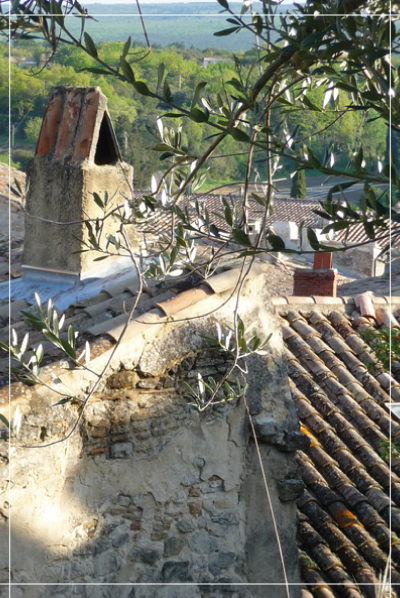

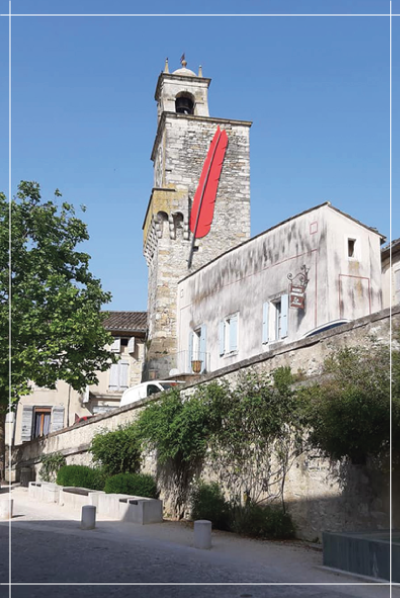
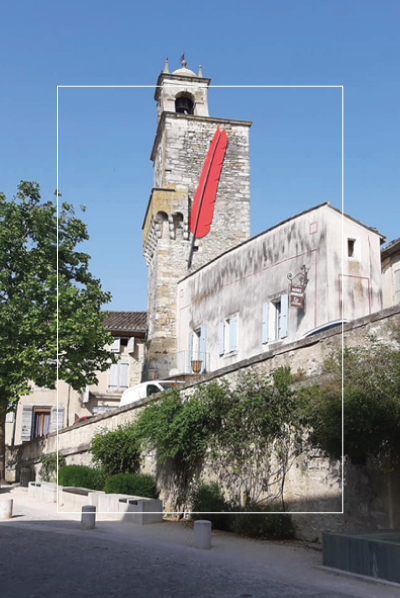
In 1996, the year of the tercentenary of Mme de Sévigné’s death, the Festival de la Correspondance was born in Grignan, on the initiative of its mayor Bruno Durieux. It was the start of an adventure that was to lead to the celebration of a genre: correspondence, a previously neglected literary field that in recent years has seen growing interest from readers, authors, publishers and actors. The Festival showed what an inexhaustible source correspondence is, in every era and in every country.
Grignan festif
The Festival de la Correspondance: one year, one theme
The Festival de la Correspondance de Grignan, a cultural event celebrating the art of letter writing, focuses on correspondence from all eras and in all forms, from the most traditional to the most contemporary. At the crossroads of all artistic expressions, the Festival attracts and retains a wide and demanding audience.
It brings together and discovers performers and authors, opening up to performances and readings from both the “repertoire” and previously unpublished works. It also invites writers, academics and researchers, offers writing and calligraphy workshops, supports visual artists, publishes correspondence and installs writing and reading rooms, an undeniable reflection of the interest in writing and reading.
This year, 2023, the 27th edition of the literary event in the Drôme region is signed for a second time by its artistic director Éric-Emmanuel Schmitt. The list of artists and personalities who will take part in the 2023 edition of the Festival de la correspondance de Grignan is extensive. For the performances taking place from July 4 to 8, spectators can already make their selections via the ticket office, which has just opened on the festival website.
VISIT THE FESTIVAL WEBSITE find out more
Fêtes Nocturnes Théâtre au Château
Every summer since 1987, Grignan has produced a theatrical show presented in front of its magnificent château façade. A director is invited to present his original creation in the very heart of the main courtyard. In this unique and sublime setting, facing the illuminated Renaissance facade of the château, the audience discovers a popular theatrical show created especially for the venue. One play and one play alone, for a total of 44 performances over the course of two summer months, the perfect way to get into the swing of open-air theater.
For the duration of the summer scenes, we offer pre-show dinners at Chapouton Farm.
VISIT THE DEPARTMENTAL WEBSITE OF THE CASTLES OF THE DRÔME find out more
Plan
1. The Mediterranean Garden
Our Mediterranean Garden, covering some 1500 m², features a collection of lavender, rockrose, rosemary and other plants that don’t need watering over time. No chemicals are used (organic fertilizers).
In the heart of this award-winning garden, discover:
The swimming pool with its biologically maintained water, our summer restaurant and the secret room, “Pavillon des Amoureux”.
2. Chapouton Farm
Built in 1760
Opened to the public in 2015, we wanted to return the place to its long-standing name “La Ferme Chapouton”. The 4-star-rated rooms are contemporary in style.
The Clair de la Plume bistro moved there in October 2017.
3. La Maison Privée
18th & 19th centuries.
Situated 100 meters from the Main House, around a staircase with a distinctive character, it offers 4 suites including a Junior Suite, 2 comfortable attic rooms with personalized decor.
The authentic happiness of a mansion.[read more]
4. Le Clair de la Plume
Welcome to the main house of “Clair de la Plume” (17th & 19th centuries), where history began.
5. La Maison d’Hôtes Botero
This guest house adjoins the hotel. It has two independent rooms (not overlooked), with bathroom (shower, toilet, washbasin), minibar, satellite TV. Garden and small swimming pool reserved for the exclusive use of the two rooms. NB: no telephone or air conditioning; for safety reasons (stairs and pool), minors are not admitted.
6. The belfry
13th century, listed as a “Monument Historique”.
The tower of the former 13th-century “porte du Tricot”, commonly known as the Belfry, was raised in 1600 to accommodate the first public clock. The belfry, together with the ramparts lined with twelve towers, formed Grignan’s defensive system in the Middle Ages. Originally, it was the main tower used to keep watch over the surrounding countryside.
This monument cannot be visited. The clock in the belfry still works, marking the hours and half-hours.
9. Château de Grignan
From the 12th to 17th centuries. Classified as a historic monument.
The first mention of the castle dates back to 1035, when cartularies referred to it as “castellum Gradignanum”. From 1239, the castle passed into the hands of the Adhemar de Monteil family, who gradually transformed the ancient medieval fortress into a pleasure residence. The south facade, known as the François 1er facade, was built in 1545. In 1559, Louis Adhémar de Monteil died childless, and his inheritance passed to the son of his sister Blanche, married to Gaspard de Castellane. Gaspard was the quadrisaïeul (5th generation) of François de Grignan, husband of Françoise-Marguerite de Sévigné, daughter of the Marquise. The château suffered many setbacks during the French Revolution, and was almost completely destroyed in 1794.
In 1912, Madame Fontaine, who had a passion for the château, bought the ruins and partly rebuilt it. In 1979, her heirs sold it to the Conseil Général de la Drôme, which has since completed the restoration.
The château is now a museum, where numerous cultural events are organized throughout the year (classical music and jazz concerts, theater performances, debates…).
A visit to the monument, if you haven’t already done so, is a must…
12. La Fontaine Sévigné
Inaugurated on October 4, 1857, following a subscription launched in 1851 by François-Auguste Ducros, mayor of Grignan.
The statue of Marie de RABUTIN-CHANTAL, Marquise de SEVIGNE, represents her seated in an armchair, with her writer’s attributes (a quill and a parchment).
According to various writings, Madame de Sévigné was “neither a perfect beauty, nor even perfectly pretty”, but her spirit always took the upper hand. When one listens to you,” said Madame de La Fayette, “one no longer sees that something is missing from the regularity of your features”.
She was an accomplished socialite, and an incomparable mother to her daughter. The latter was married in 1668 to the Comte de Grignan, who would shortly afterwards be appointed Lieutenant General of Provence. Her daughter’s departure was a real heartbreak for Madame de Sévigné, and she had only one reason for being: to write her long letters almost every day.
She joined her in Grignan at the end of her life and died there on April 17, 1696, aged seventy.
7. Typography Museum
15th century.
In the 15th century, the Maison du Bailli housed a court. The building was then used in various ways: as a church, a prison, a school… Today, it is a workshop-museum for books and typography, with exhibition rooms, a working machine shop, a bookshop and a literary café.
Take the grand stone staircase up to the 19th-century workshops, in a sound environment. Machines are brought together, from a hand press dating from 1843 to a cylinder press. On the first floor, you enter the typographer’s workshop in full production. You continue your visit in the prisons and the dungeon (well known to printers for abusing the right of expression), which have been transformed into an exhibition room. A surprise awaits you…
10. Saint Sauveur collegiate church
16th century. Listed as a historic monument.
The history of the Saint Sauveur collegiate church is inextricably linked with that of the neighboring château. Its construction is directly linked to the campaign to enlarge and embellish the old medieval château, undertaken by the Adhemar family in the early 16th century. This led to the creation of the spectacular ensemble.
Around 1530, the building was deemed too cramped for the chapter’s services, and it was decided to replace it with a larger church. The collegiate church was built between 1535 and 1539 at the request of Baron Louis Adhémar, to accommodate the services of the chapter of canons, against the rocky platform supporting the castle. The Wars of Religion brought unrest from 1562 to 1568.
In 1654, Louis Adhémar, Count of Grignan, had the façade rebuilt and, twenty-six years later, a terrace was built on the church roof. Around 1665, an admirable organ was built by Charles Le Royer (from Namur). Madame de Sévigné, who died at the Château de Grignan, is buried in the choir of the collegiate church.
Note the seigniorial tribune, suspended 15 meters high, allowing the Count of Grignan to follow the ceremonies without having to descend from the Château (whose terrace covers the roof of the collegiate church).
13. Le Jardin Sévigné
1999.
Designed in the spirit of 17th-century labyrinth gardens, this garden was commissioned to mark the tercentenary of the Marquise de Sévigné’s death.
Set below the Château de Grignan, where Françoise Marguerite de Sévigné, daughter of the Marquise and wife of François Adhémar de Monteil, Comte de Grignan, lived, this recent garden blends beautifully into the Drôme Provençale landscape. Mme de Sévigné visited here and spent the last two years of her life here; her tomb is in the collegiate church of Saint Sauveur.
The design refers to Mme de Sévigné’s famous letters to the Countess of Grignan. Boxwoods form an oval medallion, in calligraphic letters; letters that make up the name Sévigné, which can be read from the château’s terrace. This tasteful tribute was inaugurated on October 15, 1999, the anniversary of the birth of Mme de Sévigné’s daughter.
To reach this little garden, take the Rue du Tour des Remparts, on the right as you leave the Mail, then the Chemin des Adhémar. All along the ramparts, you’ll be sure to admire the old roses planted by the Association “Grignan, Pierres et Roses Anciennes”.
8. La Boutique du Village
In the heart of the village of Grignan, discover all year round the scents, delicacies and traditions of Provence and beyond… Teas, chocolates and even takeaway pastries.
Open daily in summer, Friday to Sunday inclusive the rest of the year.
The Clair de la Plume boutique is located in the heart of the village, on Place du Jeu de ballon, at the corner of the street leading up to the château. Don’t hesitate to contact us on +33 (0)4 75 96 35 76.
11. The wash-house
Around 1840.
The Maison Principale du Clair de la Plume is located right in front of this exceptional washhouse, listed as a historic monument on February 24, 1987.
The columned fountain in front of the hotel is in fact a washhouse, built around 1853 by the mayor of the time, a notary by the name of Maître Ducros. A man of taste, he also built the town hall (1856) as we know it today, and renovated part of the collegiate church. The washhouse consists of two basins: the smaller one for washing, and the larger one for rinsing (where the water inlet is located). It is said to have been inspired by a temple (of Vesta?) still visible in Rome. The special acoustics add to the uniqueness of this round washhouse. A natural spring still feeds the two basins. The Place du Mail, where the hotel is located, was the site of the “mail” game created around 1550 by the baron of the time. By Madame de Sévigné’s time, the promenade du Mail had reached the height of its embellishment: it was the meeting place for the brilliant society gathered at the château, who came to indulge in the game of “mail”, very much in vogue in the 16th century. This game, the ancestor of “croquet”, consisted in pushing a wooden ball with a small mallet fitted with a long handle.
14. La Chapelle St Vincent 10th & 11th centuries.
This is Grignan’s oldest monument. Built in the early Romanesque style, the chapel dates back to the 11th century. Its pure facade and the regularity of its small-scale construction make it a remarkable edifice. Surrounded by the municipal cemetery, this chapel dedicated to Saint Vincent was the village church before the Collegiate Church was built. The Saint Vincent chapel is located 200 meters from the main house, just opposite our Mediterranean garden. It was listed as a historic monument on July 13, 1926. [/read]
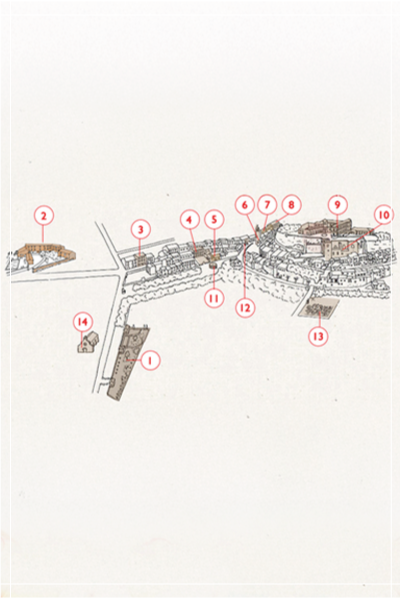
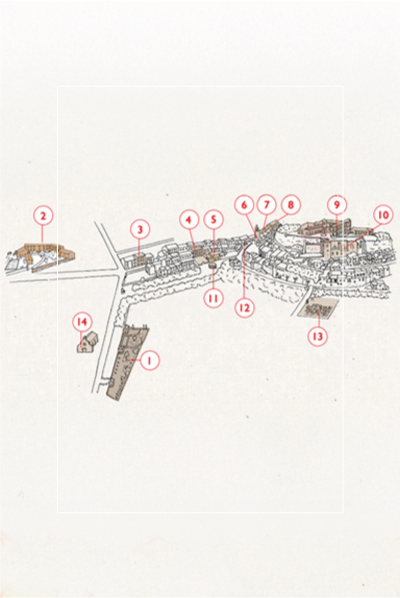
The truffle




